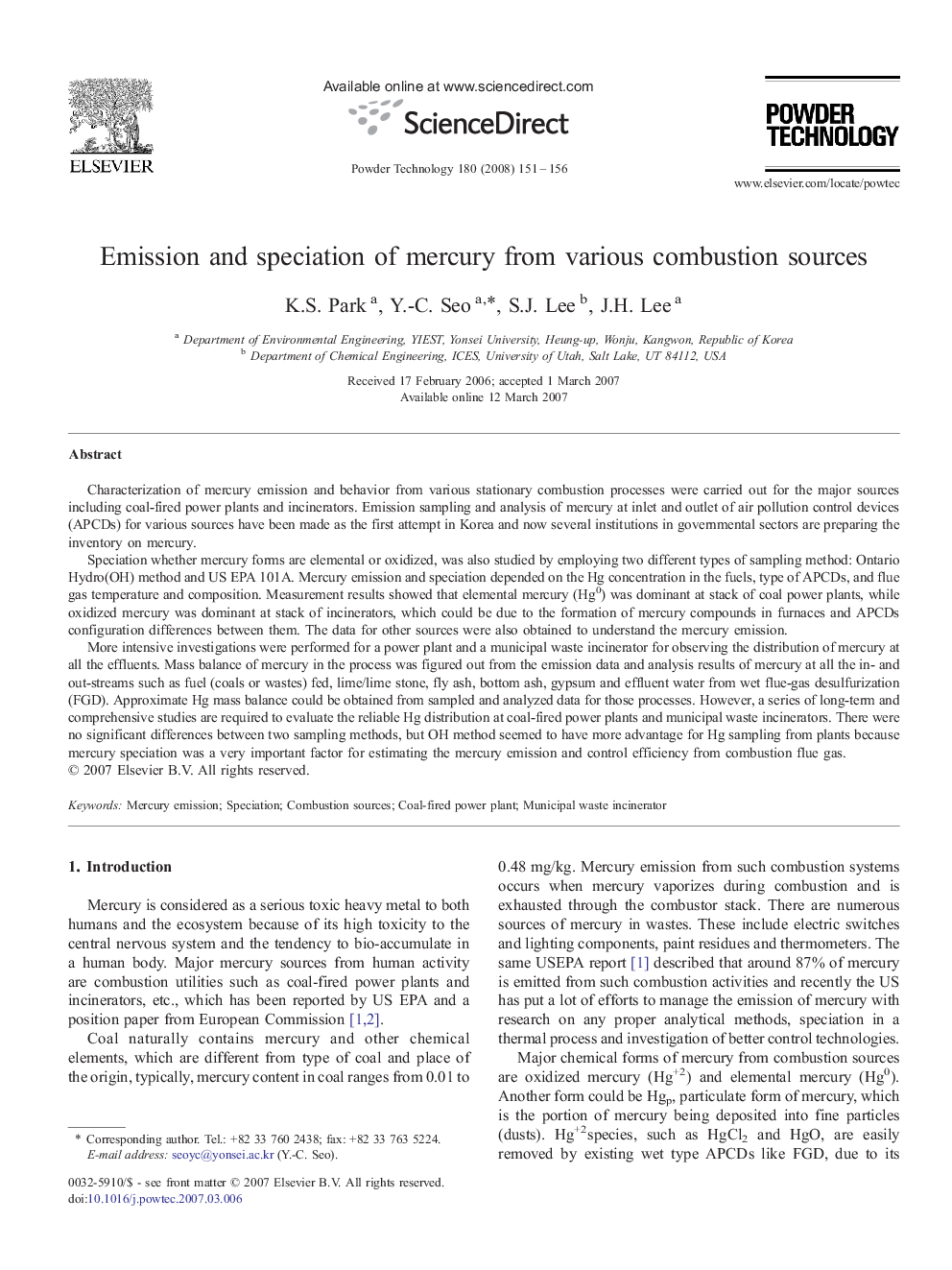| Article ID | Journal | Published Year | Pages | File Type |
|---|---|---|---|---|
| 238739 | Powder Technology | 2008 | 6 Pages |
Characterization of mercury emission and behavior from various stationary combustion processes were carried out for the major sources including coal-fired power plants and incinerators. Emission sampling and analysis of mercury at inlet and outlet of air pollution control devices (APCDs) for various sources have been made as the first attempt in Korea and now several institutions in governmental sectors are preparing the inventory on mercury.Speciation whether mercury forms are elemental or oxidized, was also studied by employing two different types of sampling method: Ontario Hydro(OH) method and US EPA 101A. Mercury emission and speciation depended on the Hg concentration in the fuels, type of APCDs, and flue gas temperature and composition. Measurement results showed that elemental mercury (Hg0) was dominant at stack of coal power plants, while oxidized mercury was dominant at stack of incinerators, which could be due to the formation of mercury compounds in furnaces and APCDs configuration differences between them. The data for other sources were also obtained to understand the mercury emission.More intensive investigations were performed for a power plant and a municipal waste incinerator for observing the distribution of mercury at all the effluents. Mass balance of mercury in the process was figured out from the emission data and analysis results of mercury at all the in- and out-streams such as fuel (coals or wastes) fed, lime/lime stone, fly ash, bottom ash, gypsum and effluent water from wet flue-gas desulfurization(FGD). Approximate Hg mass balance could be obtained from sampled and analyzed data for those processes. However, a series of long-term and comprehensive studies are required to evaluate the reliable Hg distribution at coal-fired power plants and municipal waste incinerators. There were no significant differences between two sampling methods, but OH method seemed to have more advantage for Hg sampling from plants because mercury speciation was a very important factor for estimating the mercury emission and control efficiency from combustion flue gas.
Graphical abstractCharacterization of mercury emission from various stationary combustion sources in Korea was investigated. Speciation whether mercury forms are elemental and oxidized was also studied, and mass distributions of mercury at a coal-fired power plant and an incinerator were estimated to understand the behavior of mercury in the processes as shown in figures.Figure optionsDownload full-size imageDownload as PowerPoint slide
